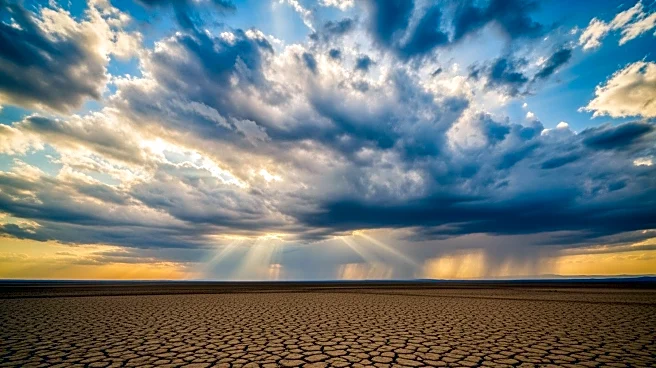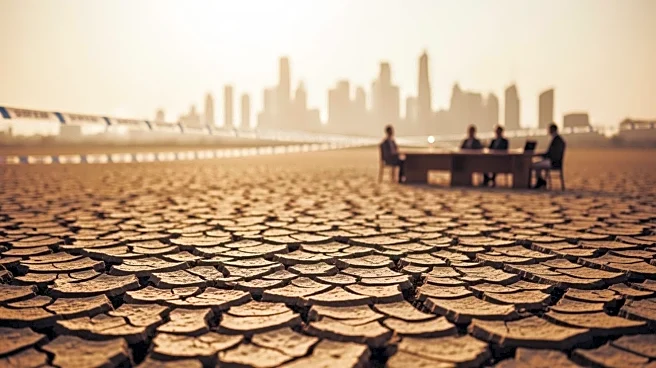What's Happening?
Iran is facing its driest autumn in 50 years, prompting authorities to initiate cloud-seeding operations to induce rainfall. The National Weather Forecasting Center reported an 89% decrease in rainfall compared to historical averages. The operations,
conducted in the Lake Urmia basin, aim to combat the severe water crisis affecting key reservoirs and drinking water supplies in major cities, including Tehran. This marks Iran's fifth consecutive year of drought, exacerbated by climate change.
Why It's Important?
The drought in Iran highlights the growing impact of climate change on water resources, potentially affecting millions of residents and the country's agricultural sector. The reliance on cloud-seeding underscores the urgent need for sustainable water management solutions. The situation could lead to increased geopolitical tensions over water resources in the region, affecting Iran's economy and social stability.
What's Next?
Iran plans to continue cloud-seeding operations until mid-May, using both airplanes and drones. Authorities are likely to implement further measures to conserve water and reduce consumption. The ongoing drought may prompt international discussions on climate change mitigation and adaptation strategies.
Beyond the Headlines
The drought in Iran raises ethical questions about the use of technology to manipulate natural processes. Long-term reliance on cloud-seeding could have unforeseen environmental impacts, necessitating careful consideration of ecological consequences.













